Samsung Galaxy Note 10.1 (2014 Edition) Review
by Brian Klug & Anand Lal Shimpi on October 1, 2013 9:00 AM EST- Posted in
- Tablets
- Samsung
- Mobile
- Galaxy Note 10.1
Display
The 2014 Edition features a 10.1-inch 2560 x 1600 Super LCD display. Looking at the subpixel structure of the panel we get an idea for exactly what Super LCD means: RB,GW.
Instead of a standard RGB stripe we get a combination of red, green, blue and white subpixels for each pixel. The white subpixel helps increase light throughput, an obvious problem with these ultra high resolution displays. The downside is that you get a lower subpixel density than a traditional RGB stripe. At these ultra high pixel densities however, the theory is that you wouldn’t notice the difference - hopefully making the power savings by having better light transmission, particularly when displaying lots of white (e.g. web pages), worth it.
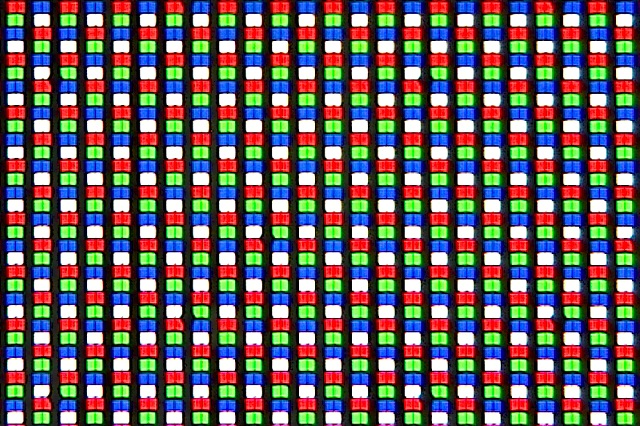
In practice the display looks pretty good, although a carefully trained eye will be able to recognize that this isn’t a standard RGB stripe. I quickly realized something was different about the display, something I later verified when looking at the subpixel structure.
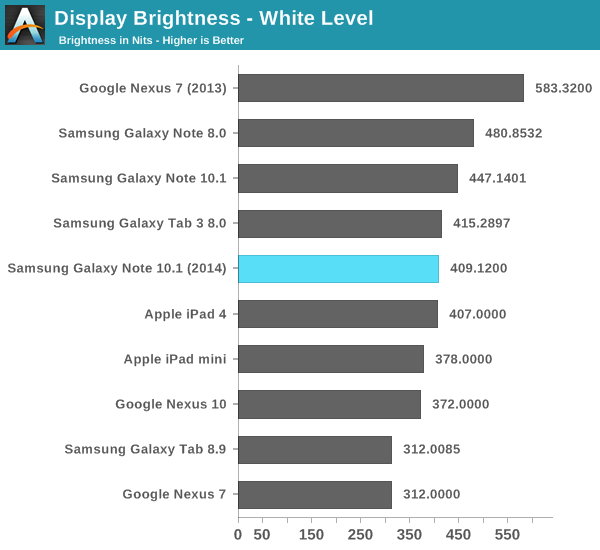
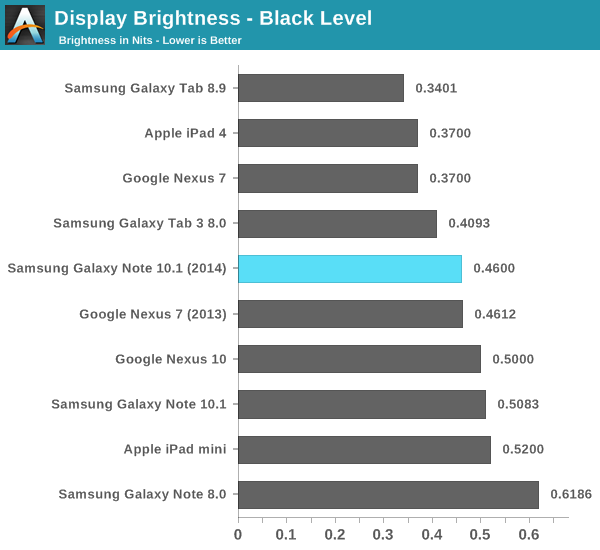
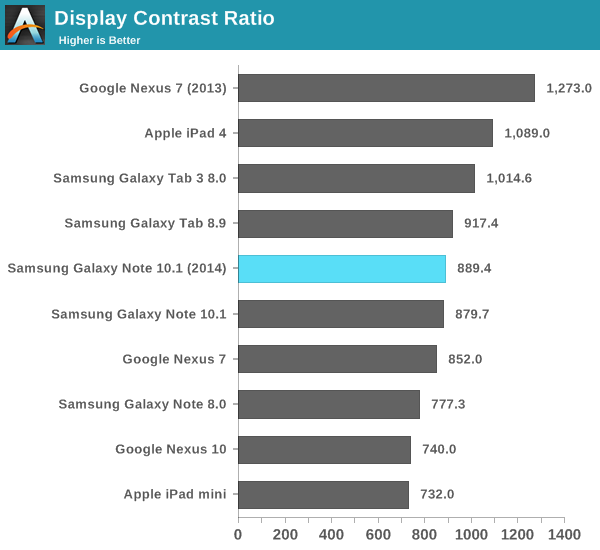
Color accuracy is pretty decent on the Note 10.1’s display. As always I’m reporting color data using Samsung’s Movie mode, which remains the most accurate setting of those offered. Grayscale performance is excellent, but our GMB and saturations tests put the Note 10.1 on par with the original Nexus 7. It’s definitely a better calibrated display than any other Samsung Galaxy Note tablet we’ve reviewed. Not quite on par with the new Nexus 7, but getting very close.
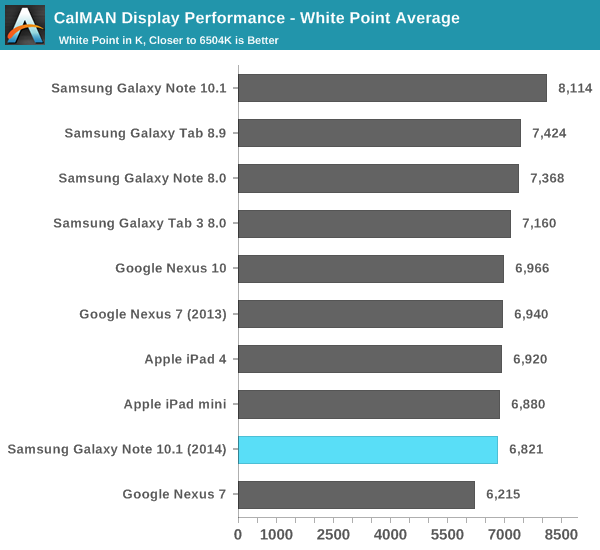
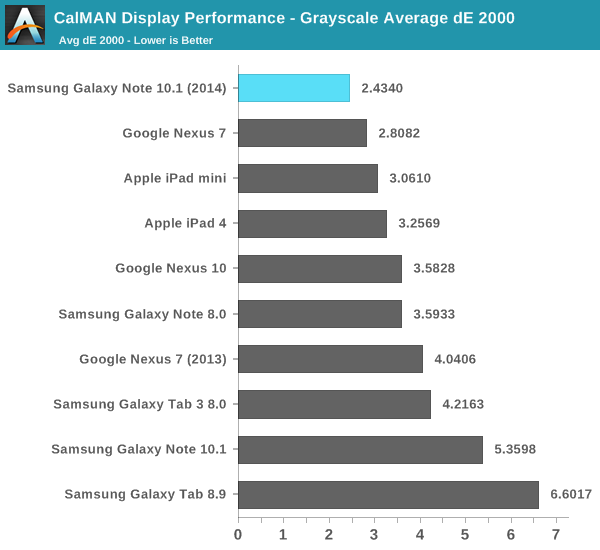
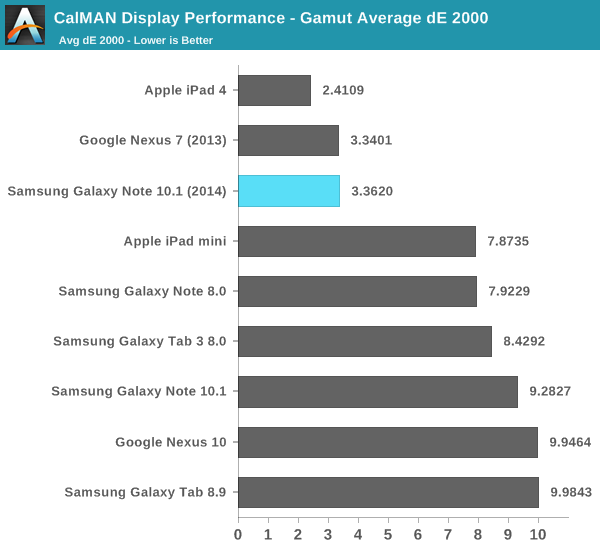
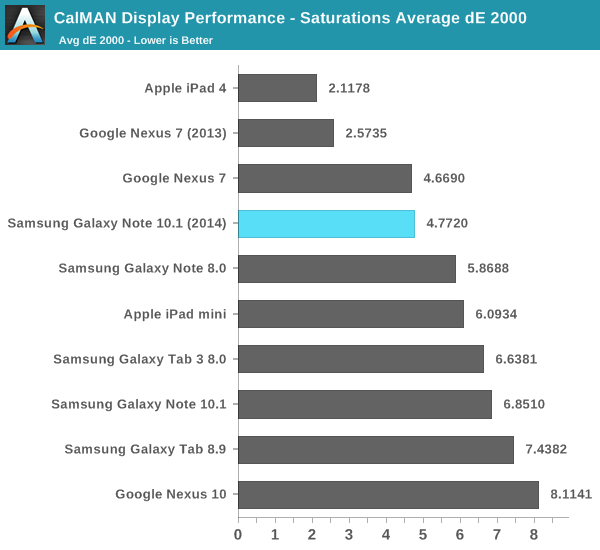
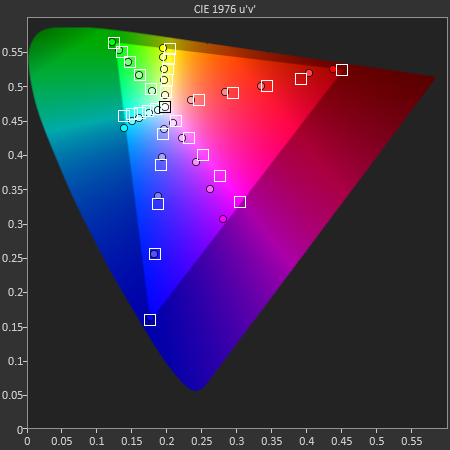
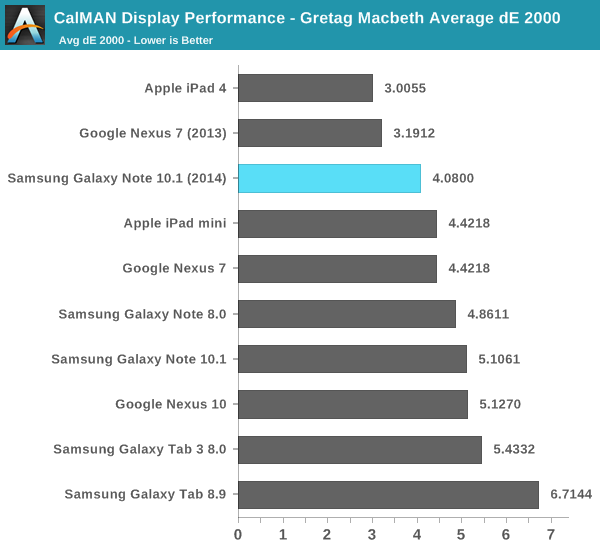

Camera
The 2014 Edition features a rear facing 8MP camera with AF and LED flash and a 2MP front facing camera. Image quality out of the rear camera was pretty good for a tablet. I took some photos using the tablet and tossed them in the gallery below, as well as embedded a sample 1080p video recorded using the tablet.
Battery Life & Charging
The Galaxy Note 10.1 (2014 Edition) ships with an integrated (non-removable) 31Wh battery, that’s substantially smaller than the iPad 4’s 42.5Wh battery - helping it maintain a more svelte figure. The question is how power efficient the combination of RB,GW panel and Exynos 5420 are in combination with one another.
We’ll start with our typical WiFi web browsing battery life test. Here we see a good combination of regular spikes in CPU usage with idle time, hopefully simulating constant, reasonably paced usage.
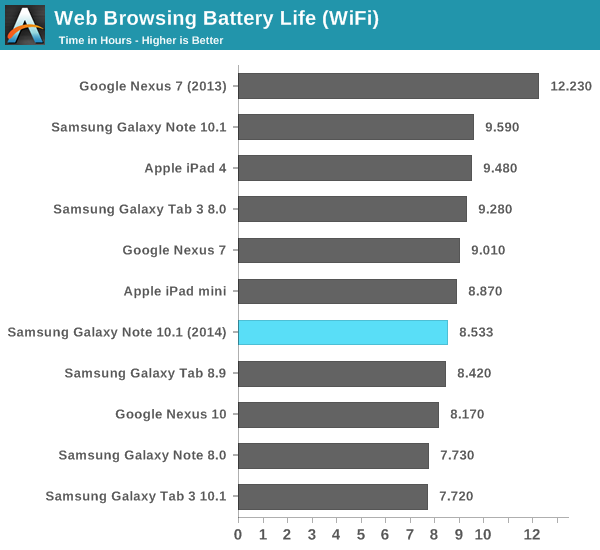
The 2014 Edition does a bit better than the Nexus 10, but clearly worse than the original Note 10.1 (and obviously worse than the much smaller Nexus 7). There’s not much you can do here other than to point out that we’re talking about an extremely high resolution panel, with an extremely power hungry SoC. The fact that we’re talking about more cores running at a higher frequency than the Exynos 5250 used in the Nexus 10 is good news, but Exynos 5420 also enjoys the benefits of being on Samsung’s 28nm LP process as well.
The video playback story is much better however. With the power hungry Cortex A15 cores able to power down (and hopefully remain there), we’re really testing the display and video decode engines here:
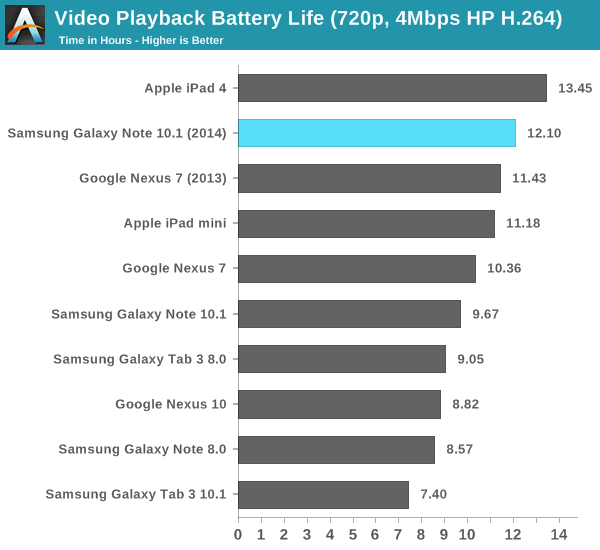
The Note 10.1 beats the new Nexus 7 and is only 10% behind the iPad 4, despite having a much smaller battery.
Like the Nexus 10, the Galaxy Note 10.1 (2014 Edition) takes an incredible amount of time to charge with the bundled 2A charger. A full charge from 0 to 100% took just over 7 hours.
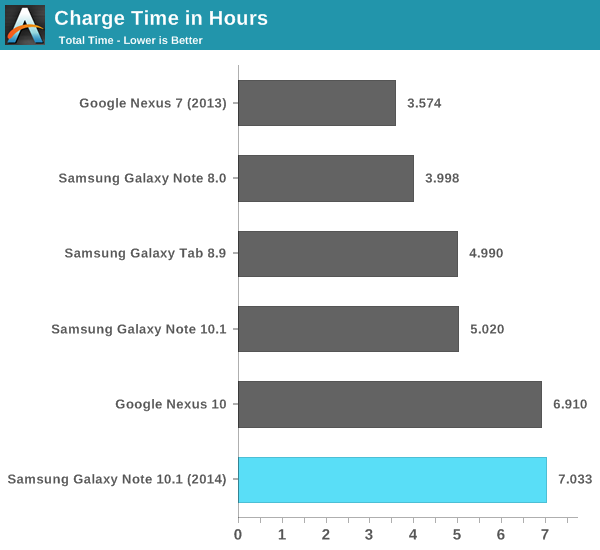
















97 Comments
View All Comments
sundragon - Wednesday, October 2, 2013 - link
"Not really, while it is not a reference ARM design, apple have only modified it slightly, but it is still a conventional arm v8 chip."Please state the ARM chip that corrolates to it?
It's not an ARM 53/57... It is, however, an Apple designed chip using the ARMv8 architecture...
The Exynos is a plain ARM 15... It's baked into a Samsung designed SOC...
Shootergod - Sunday, December 1, 2013 - link
I don't know that Note 10.1 2014 beat both iphone 5s and ipad air in geekbench 3 scores and Note 10.1 2014 LTE ver. which runs Snapdragon 800 with Adreno 330 beats out every single behcnmark of apple latest devices,so? what is your point? sounds more like you are a butt-hurt ish**p filling with so much insecurities to give reasons and bash others at any time LOL! take care noob,don't say something just by reviews(made up by apple fanboys).Google some real-deal performence and multitasking skills of this tablet before you even begin to bark :) ok?apandya27 - Tuesday, October 1, 2013 - link
Actually the A7 isn't designed by ARM, its a custom design by Apple (they license from ARM). Its been custom since the A5 I think.teiglin - Tuesday, October 1, 2013 - link
You should be clear if you want to refer to the Apple A7 SoC (with its Cyclone cores) in an article about a chip that contains four ARM Cortex A7 cores. Cyclone is the second generation of fully custom cores designed by Apple--the Swift cores in Apple's A6 SoC last year were the first, while the A5 featured a pair of Cortex A9s.apandya27 - Tuesday, October 1, 2013 - link
My mistake. Yes I was referring to the Apple A7 chip being custom designed. Thanks!Sarav - Wednesday, October 2, 2013 - link
Only since A6 which used 'Swift' cores. A5 just used regular ARM cortex A9 cores I think.MySchizoBuddy - Tuesday, October 1, 2013 - link
According to article here at anandtech. Apple A7 is indeed Apple designed CPU that implements the ARM ISA. it ISN'T designed by ARM. it was clearly mentioned by anand when he talked about the A7.ananduser - Tuesday, October 1, 2013 - link
It says more about ARMv8 vs ARMv7. It also says more about benchmarks not being able to use multiple cores. The Mali GPU however is surprisingly decent. I expected Imagination's PowerVR, that Apple uses, to be an order of magnitude better.Kevin G - Tuesday, October 1, 2013 - link
The iPhone 5S GPU is surprisingly decent for a phone though. Apple's A7X expected in the iPad 5 would have either 6 or 8 PowerVR clusters following tradition. This would be a 50 to 100% boost in theoretical GPU performance. There is a chance that Apple's A7X would be a triple or quad core CPU too.danbob999 - Tuesday, October 1, 2013 - link
It's not about ARMv8 vs ARMv7. The benchmarks are probably still compiled for ARMv7. Apple almost always lead in javascript benchmark. Even when they used a standard ARM design (such as Cortex A8) at lower clock speed. So all we know is that even with a slower CPU, Apple still comes ahead in javascript benchmarks. It doesn't mean their CPU is any faster.